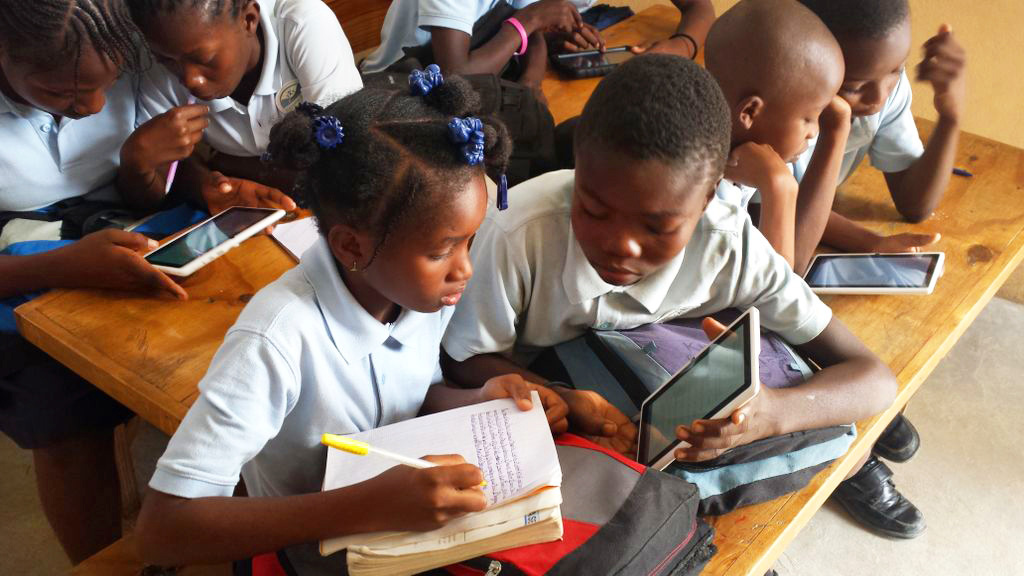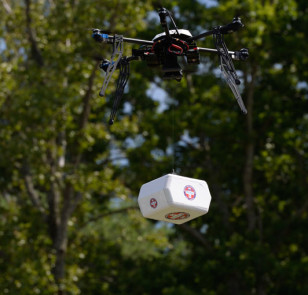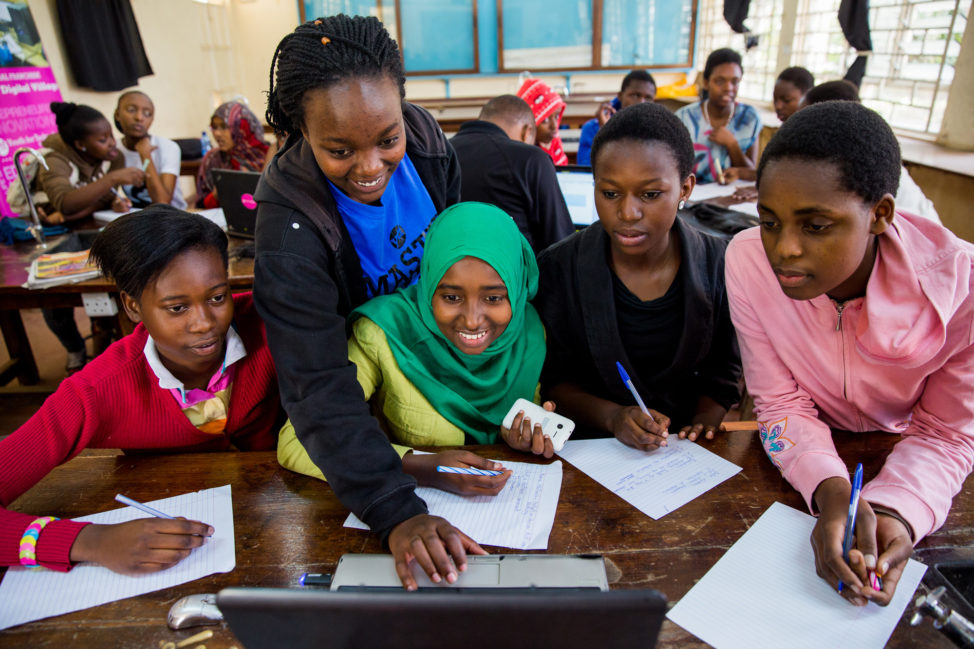
Two students at a school in Gressier, Haiti use mobile devices to access a digital library in class. (LFA/Maritza Chateau and Amanda Truxillo)
2016 opened new technology frontiers for developing countries in education and healthcare, thanks to mobile devices and a little help from nonprofits and tech giants.
In parts of the developing world, mobile technology has been bridging the gap where there is spotty or no traditional internet connectivity, a lack of teachers, limited school resources, and little or no road of financial infrastructure. School textbooks and libraries are in short supply or non-existent in places like Haiti and Sub-Saharan Africa.
But literacy advocate Worldreader had a solution. Using web-based digital libraries, e-readers, and mobile phones, the group put more than 31,000 digital books at the fingertips of school children and their teachers.
And online hub Design Squad Global made STEM education (science, technology, engineering and math) available to school children in South Africa, Swaziland and Botswana. The initiative included after-school engineering projects, online collaboration, and cross-cultural communication designed to build and promote the next generation of makers.
Promise of big data
Using data collection and big data – complex analytical and behavioral databases that allow researchers to extract social and economic trends – the Campaign for Female Education (CAMFED) helped African teachers track the progress of students in remote areas and gain access to financial resources online. The effort also helped local governments come up with better educational policies. But in some countries, the promise of the technology was hampered by the lack of data-collection infrastructure and archaic government regulations.
The challenges kept nonprofit Bayes Impact from pushing its ambitious big data project into developing countries. The initiative helps healthcare providers and social workers pinpoint populations that are most vulnerable to disease or have the least access to social services. But the group intends to expand the program to developing countries to help first responders identify and reach at-risk populations more efficiently.

A Flirtey drones delivers medical supplies in Wise County, Virginia, in the first FAA-approved drone delivery in the U.S. (Flirtey)
And where data-collection was lacking, drones filled the gap.
Flight of the drones
Guyana, Haiti and the Philippines have been looking at the use of drones to deliver medical supplies to people in need in remote areas. Tennessee-based Remote Area Medical (RAM), which has operated medical flights in Brazil for many years, is exploring the use of drones with the government of Guyana to deliver medicine to remote villages when bad weather prevents their planes from making the trip.
And in Ghana, United Nations health experts took a page right out of Amazon’s manual to use drones to deliver birth control supplies to women in remote or inaccessible areas.
Drones also came to the aid of refugees making the dangerous crossing from the Aegean and Mediterranean seas to the West. Some of the refugees who survived the ordeal came up with drone solutions to enable rescue workers to quickly find refugees who run into trouble as they make the trek.
Tools versus skills
Leveraging new tech tools is useful, but raising a new generation of entrepreneurs can transform lives. To that end, the Youth for Technology Foundation announced that beginning in 2017, it will train 6,000 Nigerian girls who are unable to attend school or are at risk of human trafficking to use 3-D printing. The training will include business and financial know-how, and a host of other skills that should help these girls maintain their independence and establish their own livelihoods.

Students participate in a class at the Youth for Technology Foundation academy in Nairobi, Kenya. (Youth for Technology Foundation)
Google also launched an initiative to equip up to 300,000 South Africans with digital skills. The project targets another 400,000 in Nigeria, 200,000 in Kenya, and 100,000 from other Sub-Saharan countries. Another Google initiative will train two million Indian Android developers.
Only 25 percent of India’s developers work on mobile platforms – a lifeline for many in developing countries. In Mumbai’s slums, Indian teenage coders have been building apps to help solve community problems like getting access to water and education, and fending off sexual harassment.
The new skills will help foster a tech-savvy generation in some of the world’s poorest countries that have missed out on some of the benefits of technology. According to the World Economic Forum, only seven countries benefited from technological innovation in 2016. None of them are developing countries. Those are the United States, Singapore, Finland, the Netherlands, Sweden, Switzerland and Israel.

One response to “For Developing World, 2016 Brought Education, Drones, Big Data”
[…] For Developing World, 2016 Brought Education, Drones, Big Data – Voice of America […]